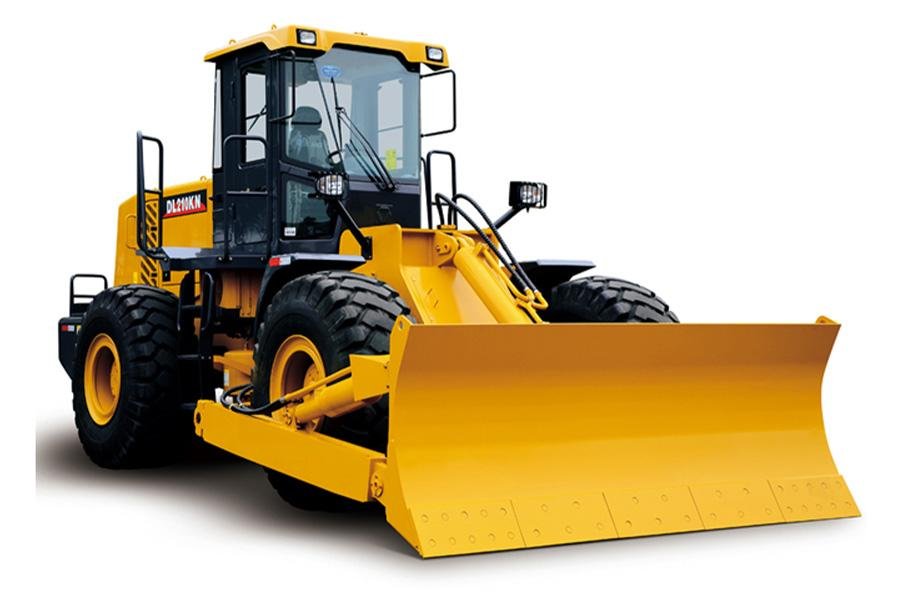
Introduction:
In the world of heavy machinery, few vehicles command as much respect and admiration as the bulldozer. With its robust build, formidable strength, and unparalleled versatility, the bulldozer plays a pivotal role in a wide range of industries, from construction and mining to agriculture and forestry. In this comprehensive guide, we will explore the history, design, functionality, and applications of bulldozers, shedding light on the indispensable role they play in powering progress and shaping the world around us.
A Brief History of Bulldozers:
Origins:
The roots of the bulldozer can be traced back to the late 19th century when steam-powered traction engines were used to haul heavy loads and clear land. The invention of the crawler tractor in the early 20th century marked a significant advancement in earthmoving technology, laying the foundation for the modern bulldozer.
Development:
Throughout the 20th century, bulldozer technology continued to evolve rapidly, with improvements in engine power, hydraulic systems, and blade design. The iconic bulldozer blade, originally made of steel, was refined and adapted to suit different applications, from grading and leveling to pushing and loading.
Modern Innovations:
Today, bulldozers come in a variety of sizes, configurations, and capabilities, ranging from compact mini-dozers for landscaping to massive mining dozers capable of moving mountains of earth. Recent innovations in bulldozer design include GPS-guided systems, ergonomic cabs, and advanced telematics, which enhance precision, efficiency, and safety.
Anatomy of a Bulldozer:
1. Powertrain:
The powertrain of a bulldozer consists of an engine, transmission, and hydraulic system, which work together to provide propulsion, steering, and blade control. Modern bulldozers are typically powered by diesel engines, which offer high torque and fuel efficiency.
2. Undercarriage:
The undercarriage of a bulldozer comprises tracks, rollers, and idlers that support the weight of the machine and provide traction on various types of terrain. Tracks come in different configurations, including standard and low-ground-pressure options, depending on the specific application.
3. Blade:
The blade, or dozer blade, is the primary attachment of the bulldozer, mounted on the front of the machine for pushing, leveling, and grading. Blades come in various sizes and shapes, including straight blades, U-blades, and angle blades, each designed for specific tasks and conditions.
4. Cab:
The cab of the bulldozer is the operator’s control center, equipped with ergonomic controls, instrumentation, and visibility aids for operating the machine safely and efficiently. Modern cabs may also feature climate control, sound insulation, and suspension seating for comfort.
Applications of Bulldozers:
1. Construction:
Bulldozers are essential tools in construction projects, where they are used for site preparation, earthmoving, and land clearing. They can level uneven terrain, excavate foundations, and push soil, gravel, and debris with precision and efficiency.
2. Mining:
In the mining industry, bulldozers play a critical role in excavating and transporting earth, rock, and minerals. Mining dozers are equipped with specialized blades and ripper attachments for stripping overburden, building access roads, and creating haulage ramps.
3. Agriculture:
Bulldozers are commonly used in agriculture for tasks such as land leveling, drainage, and field preparation. They can clear brush, remove tree stumps, and create terraces, helping farmers improve soil productivity and maximize crop yields.
4. Forestry:
In the forestry sector, bulldozers are employed for timber harvesting, site preparation, and fire suppression. Forestry dozers are equipped with protective guards, screens, and cab pressurization systems to withstand the rigors of working in rugged, wooded environments.
Advantages of Bulldozers:
1. Power and Performance:
Bulldozers are known for their impressive power and performance, capable of moving large volumes of material quickly and efficiently. Their high torque engines, heavy-duty undercarriages, and rugged construction make them well-suited for tough jobs in challenging conditions.
2. Versatility:
Bulldozers are highly versatile machines, thanks to their interchangeable attachments and adjustable configurations. Operators can easily switch between different blade types, ripper attachments, and auxiliary equipment to tackle a wide range of tasks with a single machine.
3. Maneuverability:
Despite their size and power, bulldozers are surprisingly maneuverable, thanks to their articulated chassis and responsive controls. They can navigate tight spaces, steep slopes, and rough terrain with ease, making them ideal for working in confined or inaccessible areas.
4. Reliability:
Bulldozers are renowned for their durability and reliability, with robust construction and high-quality components that can withstand years of heavy use and abuse. Routine maintenance and servicing ensure that bulldozers remain in peak condition, minimizing downtime and maximizing productivity.
Future Trends and Innovations:
1. Autonomous Bulldozers:
Advancements in automation and artificial intelligence are paving the way for autonomous bulldozers capable of operating without direct human intervention. These self-driving machines can increase efficiency, safety, and productivity on job sites while reducing labor costs and operator fatigue.
2. Electric and Hybrid Bulldozers:
With a growing emphasis on sustainability and environmental conservation, manufacturers are developing electric and hybrid bulldozers powered by alternative energy sources such as batteries and fuel cells. These eco-friendly machines offer reduced emissions, lower operating costs, and quieter operation compared to traditional diesel-powered bulldozers.
3. Digitalization and Telematics:
The integration of digital technologies and telematics systems enables real-time monitoring, diagnostics, and remote control of bulldozers from anywhere in the world. By collecting and analyzing data on machine performance, fuel consumption, and maintenance schedules, operators can optimize efficiency, minimize downtime, and prolong the lifespan of their equipment.
Conclusion:
Bulldozers are more than just machines; they are the workhorses of modern industry, powering progress and shaping the world around us. From their humble origins as steam-powered tractors to their state-of-the-art designs equipped with cutting-edge technology, bulldozers have come a long way in shaping the world we live in today. As we look to the future, the role of bulldozers in building a sustainable, connected, and prosperous world will only continue to grow, making them an essential tool for generations to come.